Roses are red, violets are blue; Astilbe plants bring the rainbow into the garden for you!Many love Astilbe plants because they are absolutely stunning and low-maintenance feathery perennials. Every homeowner can take proper care of an Astilbe and have a beautiful garden most of the year (spring to fall). That’s because wherever you live, there’s an Astilbe hybrid you can plant outdoors.
Even if they don’t bloom, Astilbe plants add color and texture to your garden thanks to their healthy, ferny, bronze-and-green foliage. Moreover, florists adore Astilbe’s flower plumes because they make ideal fresh-cut flower arrangements for naturally-dried bouquets.
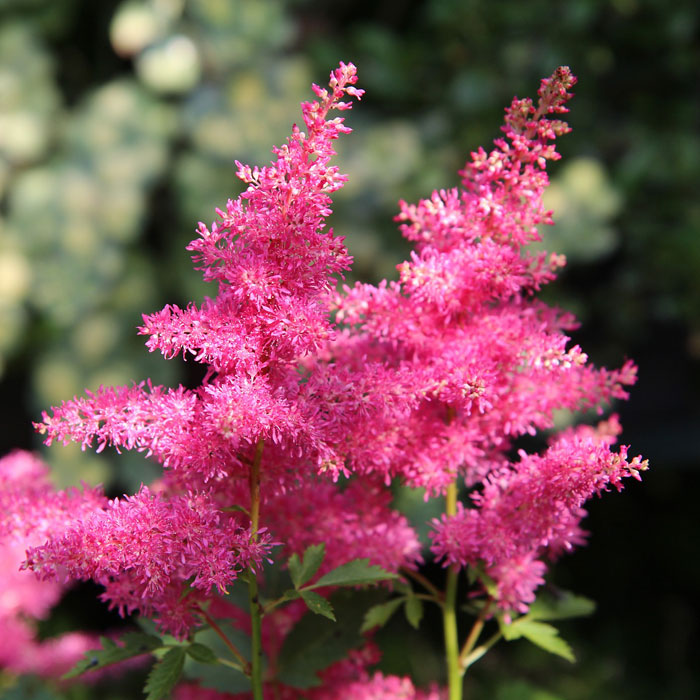
Image credits:Etienne-F59.
Facts About Astilbe Plants
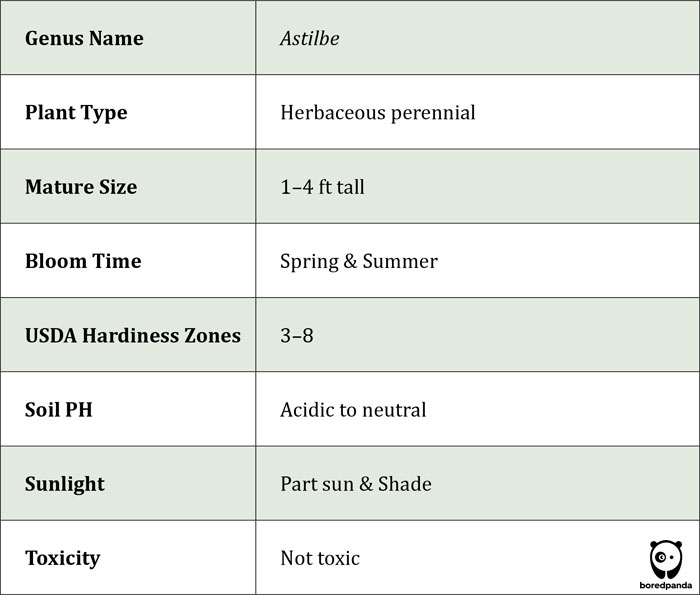
Astilbe Flower Varieties
Astilbe plants are real garden gems with fluffy plumes and various colors, from soft pastels to bold hues. Check the most sought-after Astilbe varieties and pick the one that adds a unique touch to your garden.
False Goat’s Beard(Astilbe chinensis)
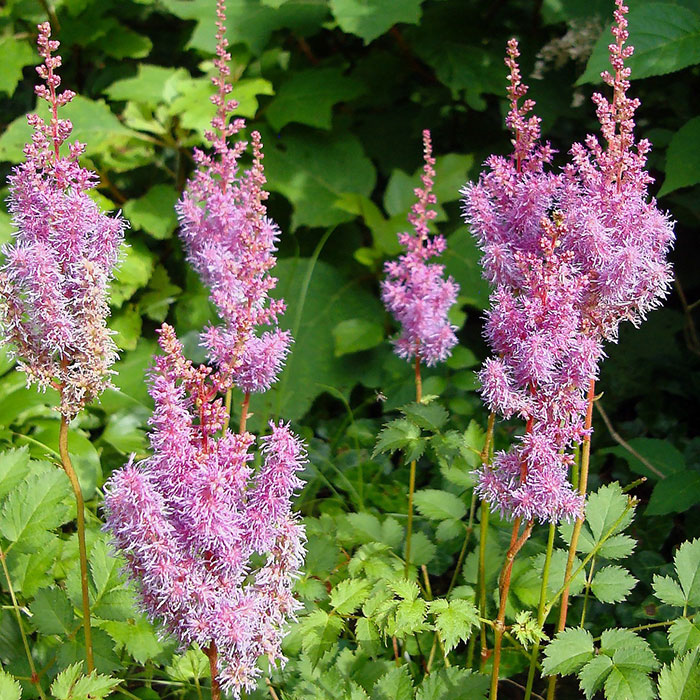
Image credits:Deedster.
Astilbe chinensiscultivars are popular, fast-growing, rhizomatous plants, more drought-resistant than others. Some of the most known cultivars include:
Japanese Astilbe(Astilbe japonica)
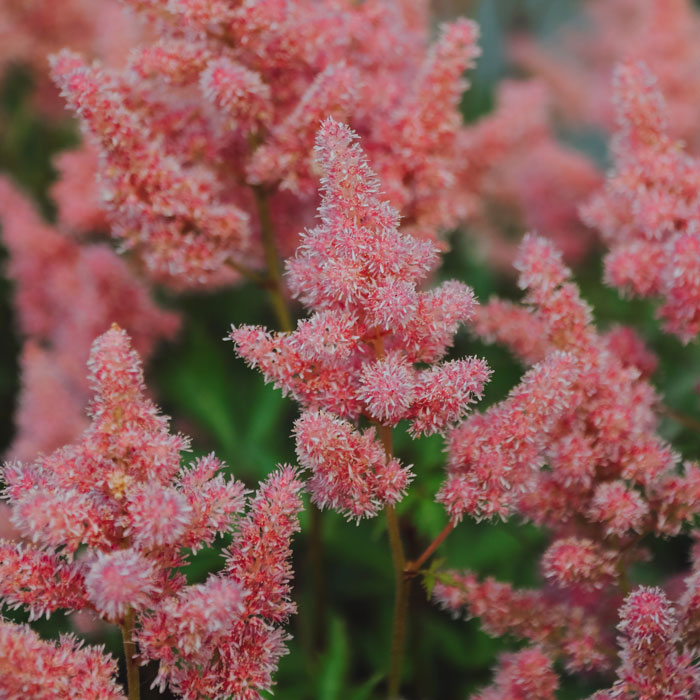
Image credits:Carlie Crooks.
During the early to mid-summer, mostAstilbe japonicacultivars burst into bloom, creating abeautiful gardenwith their dense, pyramidal flower plumes. Here are some of the cultivars in more detail:
Astilbe arendsii
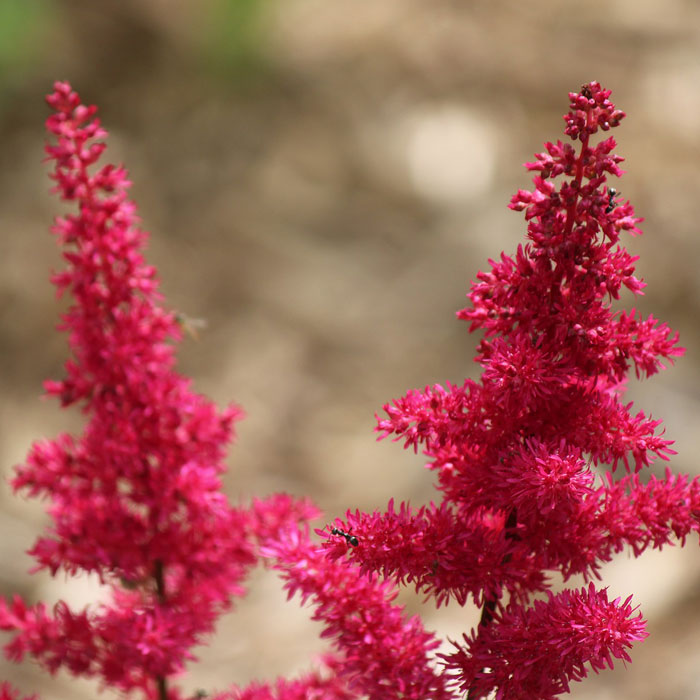
Image credits:Cothni3.
Astilbe arendsiiis a cultivar group of flower hybrids known for their stunning blooms, ranging from pure white to vibrant red and featuring attractive, deeply cut foliage.
Astilbe thunbergii
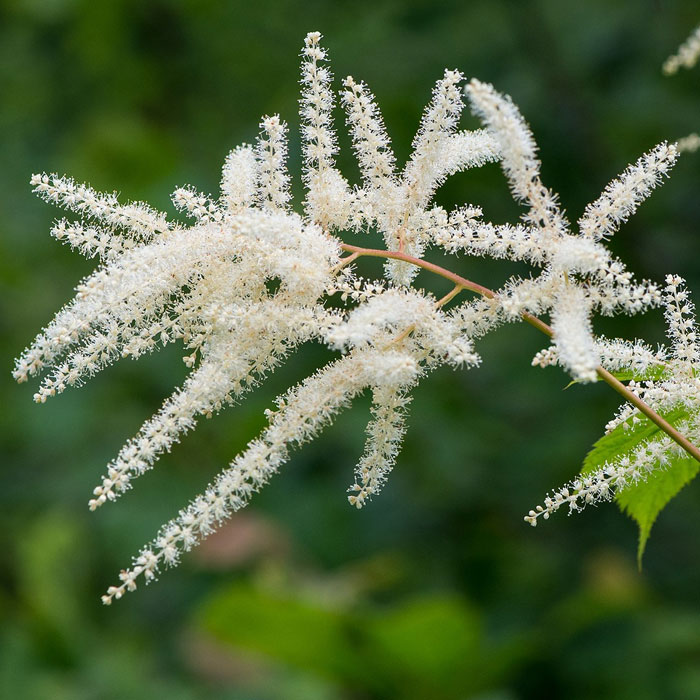
Image credits:Pezibear.
A flowering plant species from Japan,Astilbe thunbergiiis known for its elegant and colorful plumes. The ‘Straussenfeder’ hybrid earned the Royal Horticultural Society’s prestigiousAward of Garden Merit.
When And Where to Plant Astilbe
Astilbes are relatively slow-growing plants. However, once they reach maturity, they bloom for many years without requiring special care.For optimal growth, you should plant Astilbes in spring or early-to-mid fall.Avoid the hottest part of summer for planting. If you must plant during warmer periods, water thoroughly until you notice new blooms.
These plants must be grown inshady spotswith 1–2 hours of sunlight per day. Astilbes bring their A-game if planted at least 18 to 24 inches apart in soil that’s well-drained, moist, and rich in organic matter.
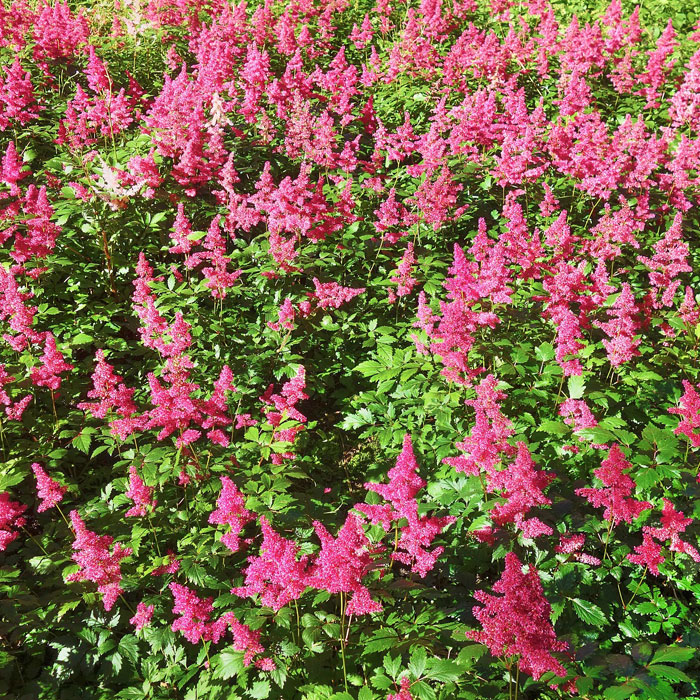
Image credits:MabelAmber.
Companion Plants
Astilbes are very easy to create floral patterns with and combine with other perennials and shrubs.Coral Bells, Hostas, and Japanese Painted Ferns are the most popular companion plants. However, there are more plants that don’t mind co-living with Astilbe. Here are some of them:

Astilbe Plant Care
These vibrant gems are easy to maintain, but there’s a lot to learn about getting them off to a great beginning. From choosing the right soil to mastering propagating techniques, we’ve got you covered!
Soil, Light, and Water
Astilbe thrives inrich, moist, slightly acidic soil(pH 6.0). Adding organic matter in the hot summer months is best to prevent drying out and potential foliage issues. Add 2 inches of mulch on the stems after heavy frost to help protect the roots.
Astilbes are known as shady perennials for a reason.They prefer locations with light morning sun and afternoon shade. However, bear in mind that some types of Astilbes prefer full sun to full shade. There is no one-size-fits-all solution.
When it comes to watering Astilbe plants, consistency is key.It’s best todeeply water Astilbe plants every week.Aim to keep the ground moist but not waterlogged, or you’re risking brown foliage and probably killing Astilbe.

Fertilizer
The best way to feed your Astilbes is to spray balanced,water-soluble fertilizerto moist soil (not leaves) every spring. In addition, add a 2-inch thick layer of compost and balanced organic fertilizer in spring, repeating the process in early summer. If planting, rake it into the soil; for growing plants, sprinkle a few granules in the soil.
Staking and Spacing
Astilbe flowers need proper staking and spacing, especially in taller varieties with delicate plumes. Keep the spacing of about 18 to 24 inches between plants to ensure optimal air circulation and healthier growth.
Moreover, don’t forget to provide support for Astilbes with tall plumes or long flower spikes. Taller varieties benefit from gentle staking to prevent flopping. Consider planting them in groups for increased stability, helping them stand tall and upright.
Deadheading and Pruning
For a tidy look, deadhead fading Astilbe flowers regularly. Cut the plants to the ground level during fall to avoid insects and diseases. During summer, only cut flowers to the ground if you notice dried foliage. This will promote a more vibrant regrowth.
Mulching
Mulching helps maintain soil moisture and protect the roots throughout winter. Opt for a 2 to 4 inch layer of organic mulch, like shredded bark or compost. Be careful not to apply mulch over the plant’s crown to prevent rot issues.

Common Problems
A major concern is finding the balance between moist but not soggy soil. Sometimes, when we need to keep it moist and not soggy, we might end up drying it out. The main symptoms of dried-out soil are curled and brown leaves.
Common diseases affecting Astilbes are bacterial leaf spot, fungal leaf spot, and powdery mildew.Additionally, viruses like Fusarium wilt can also kill an Astilbe if you don’t take any preventative measures.
These plume-like flowers attract butterflies and bees, but there are also some pests you will need to watch out for.Harmful pests are foliar and root-knot nematodes, tarnished plant bugs, slugs, and Japanese beetles.

How to Propagate Astilbe
Astilbes are fantastic for adding color to your garden. If you’re looking to expand their presence in your garden quickly and efficiently, learning how to multiply them is key! You can propagate Astilbes in two ways:divisionandseeds.

Propagating Astilbes via seeds requires time and patience, and the outcome may differ from the parent plant. The process starts indoors 6–8 weeks before the last frost. Use soft, loose soil mix, and placeAstilbe seedsin a well-lit and warm spot for germination.
Maintain a temperature of 65–70°F, moisten the soil, and prevent seed washout with aspray watering bottle. Utilize nitrogen-rich fertilizer for optimal growth conditions. After 4–5 weeks of germination, the Astilbes should be about 2 inches tall. Transplant the seedlings outdoors, spacing them 18 to 24 inches apart in warm soil.

FAQs
Does Astilbe Bloom All Summer?
Astilbe typically blooms in late spring to early summer, NOT all summer. The exact flowering period can vary based on the specific variety of Astilbe and local climate conditions.
What Are the Cons of Astilbe?
While Astilbe is a popular and beautiful perennial, it’s essential to be aware of some of its potential drawbacks:
Limited Blooming Period:Astilbe blooms usually in late spring to early summer. Once the flowers fade, the plant relies on its foliage.
Frequent Watering Schedule:Astilbe prefers consistently moist soil and can struggle in dry conditions. This may require regular watering, which can be a drawback for homeowners with a busy lifestyle.
Sunlight:While many varieties of Astilbe thrive in partial shade, they may not perform well in full sun, leading to wilting or leaf scorching. Finding the right balance of sunlight and shade is key when planning your garden.
Will Astilbe Come Back Every Year?
Yes, Astilbe is a perennial plant, which means it will come back year after year under the right growing conditions. As a hardy herbaceous perennial, Astilbe goes through dormancy in the winter and regrows in the spring, showcasing its beautiful blooms and foliage.

READ NEXT:
Japanese Maple Tree: Stunning Varieties and Care Tips
Learn How to Plant, Grow, and Maintain a Beautiful Bottle Brush Tree
Everything You Need to Know About the Bradford Pear Tree and Its ProblemsYou May LikePeople Are Sharing Their Decked-Out Bedrooms, And Here Are 30 Of The Most Amazing OnesŽydrūnė TrukanavičiūtėAster Growth & Care: Everything You Should Know For A Starry LandscapeAivaras KaziukonisSnake Plant Care Guide & Tips For A Thriving PlantFranka Dervishi
Žydrūnė Trukanavičiūtė
Aivaras Kaziukonis
Franka Dervishi
Home & Design